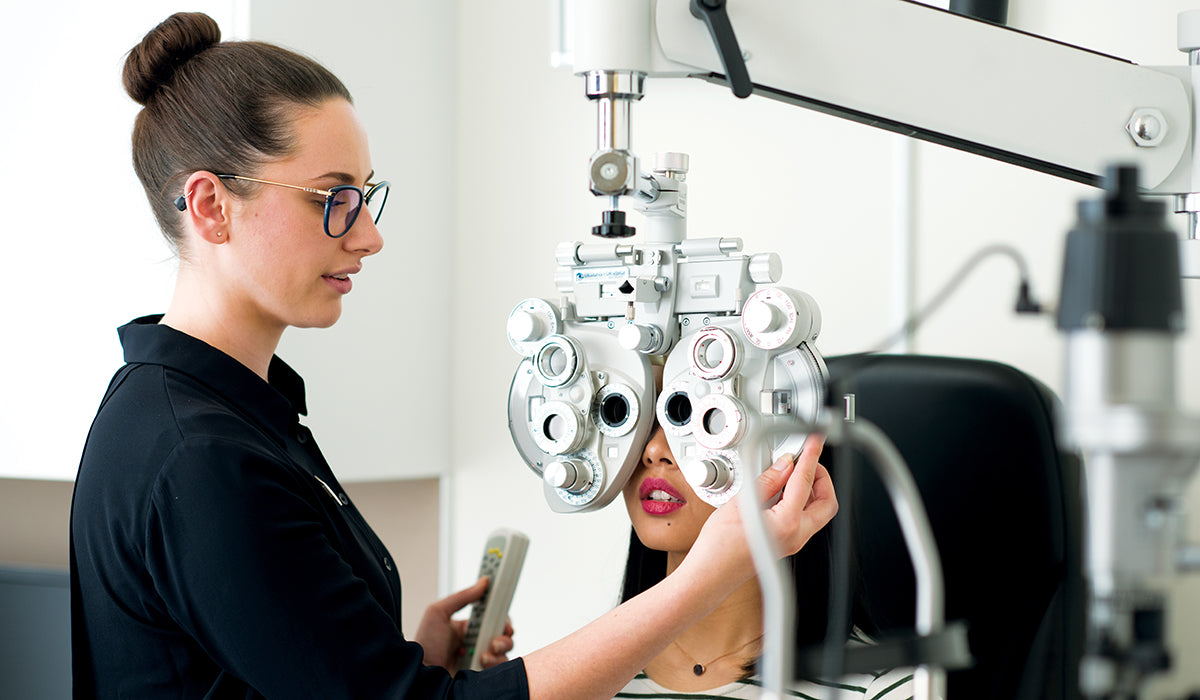What you need to know about pterygium

A pterygium (pronounced ter-ij-ee-um), is a growth of the eye’s conjunctiva, the clear mucous membrane covering the white part of our eyes.
It’s a common and benign (non-cancerous) condition that can happen on one or both eyes – and it affects about one in 100 Australians. An optometrist can diagnose it just by looking at it during a routine eye test.
What happens to the eye/s?
A triangular-shaped growth will usually start in the inner corner of the eye - and may appear raised, pink and fleshy with fine blood vessels. It might stay small, but it can spread onto the cornea over time, which you’ll need to watch as it can affect your vision.
What does it feel like?
A pterygium is usually painless, but can cause some mild symptoms like:
- Eye irritation
- Inflammation
- Red, bloodshot eyes
- Itching or burning sensations
- Mild eye pain
- Vision problems (if the pterygium starts to cover the cornea)
How does it happen?
Being exposed to sunlight, wind, dust or sandy environments can have a pretty big influence, as well as simply ageing. Genetics could also play a role.
One simple thing you can do? Grab a good pair of sunnies to protect your eyes from the elements. Sunglasses that comply with Australian standards (category 2 or above), will give you a good level of protection from harmful UV rays.
Wraparound sunglasses offer the best protection and can also prevent grit from getting into your eyes.
How is a pterygium treated?
It all depends on how developed it is. If it’s small and not causing irritation or vision problems, you might not need any treatment. Your optometrist can keep checking in on it during your routine eye examinations.
If your eyes are irritated, some eye drops or ointments can help by lubricating the eye or relieving some inflammation. The only way to remove a pterygium is with surgery, but this is only really recommended if it’s causing a lot of irritation or it’s growing across the cornea. That said, some people like to get them removed for cosmetic reasons. It’s worth noting that even after surgery, the pterygium may grow back.
Your optometrist can talk you through the best options – and refer you to an ophthalmic surgeon if you need one.

We're here to help
Ask your optometrist if you have any questions about pterygium or book an appointment today.
You might also like to read...
View all-
Understanding astigmatism
There’s a good chance you’ve heard of astigmatism before. It’s a common eye condition that causes blurred vision, discomfort in your eyes and headaches.
Eye conditionsUnderstanding astigmatism
There’s a good chance you’ve heard of astigmatism before. It’s a common eye condition that causes blurred vision, discomfort in your eyes and headaches.
Read more -
Learning more about cataracts
You’ve probably heard of cataracts – when the normally clear lens of the eye becomes cloudy. It happens because the lens becomes hardened, and it means a gradual decrease in...
Eye conditionsLearning more about cataracts
You’ve probably heard of cataracts – when the normally clear lens of the eye becomes cloudy. It happens because the lens becomes hardened, and it means a gradual decrease in...
Read more -
The ins and outs of colour deficiency
You might know colour deficiency by its other name – colour blindness. This name isn’t technically correct, as most people living with colour deficiency can actually still see colours.
Eye conditionsThe ins and outs of colour deficiency
You might know colour deficiency by its other name – colour blindness. This name isn’t technically correct, as most people living with colour deficiency can actually still see colours.
Read more





